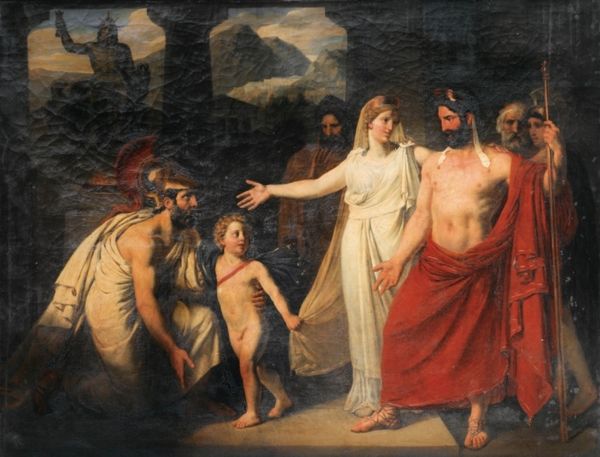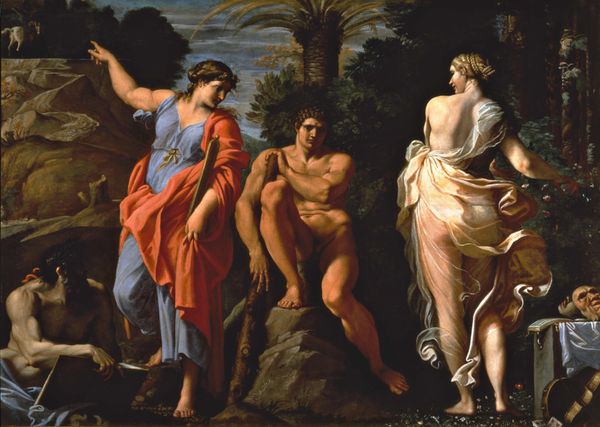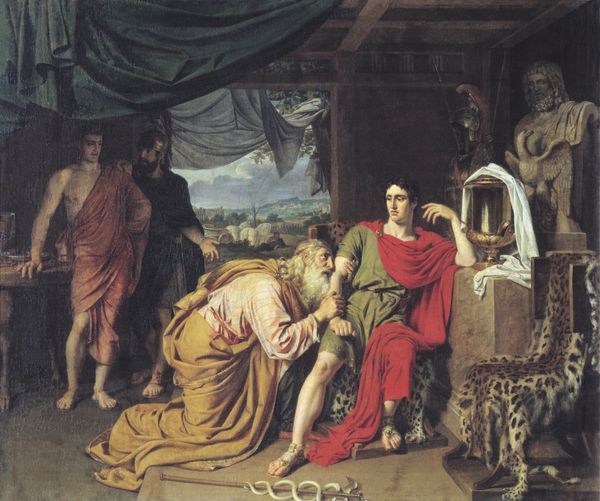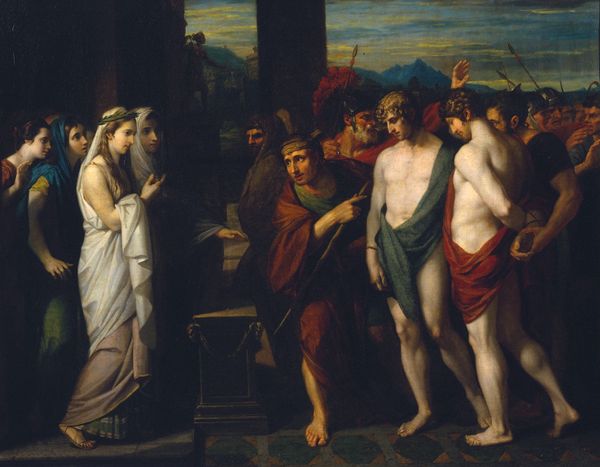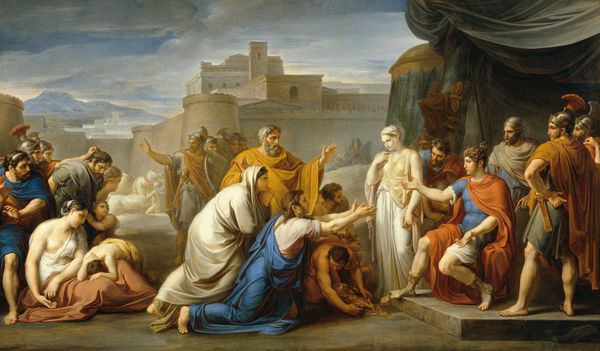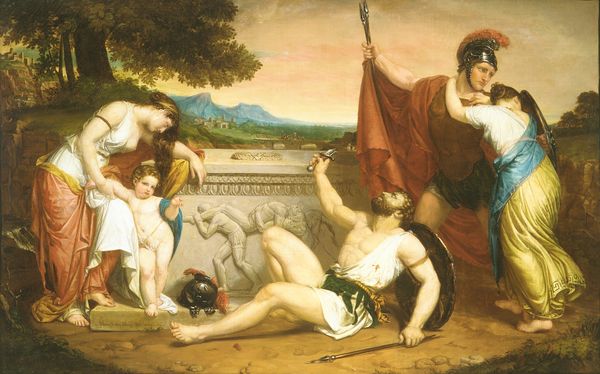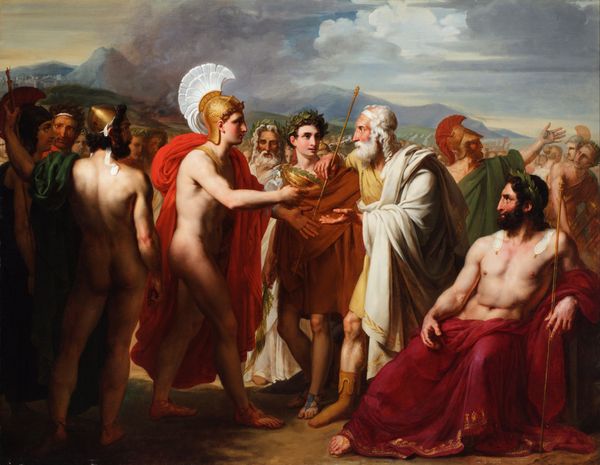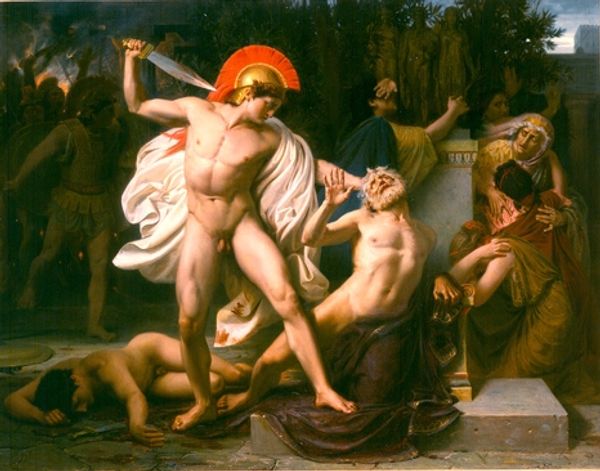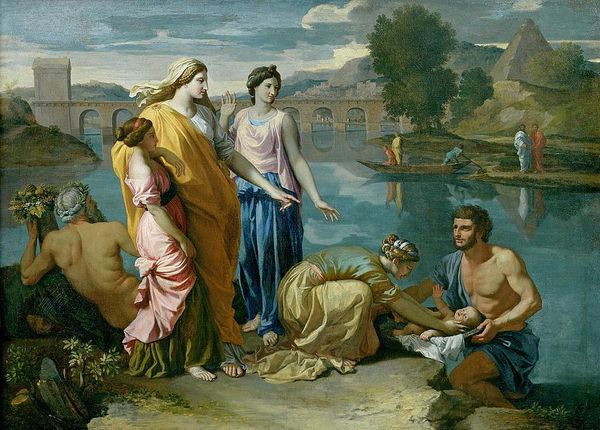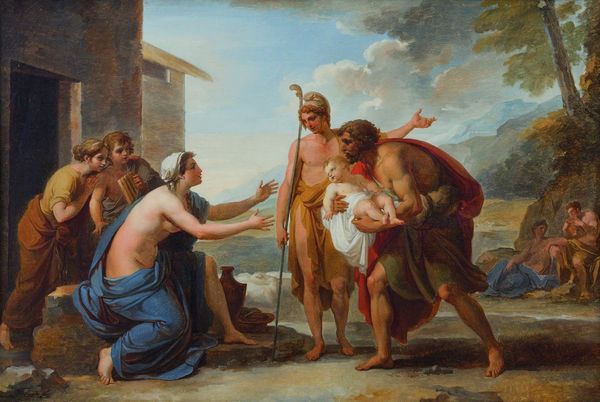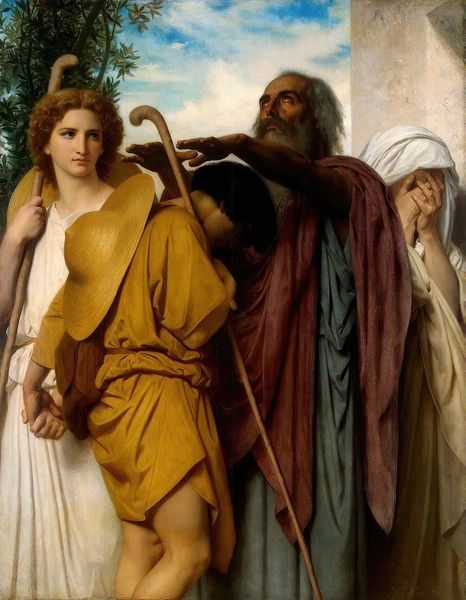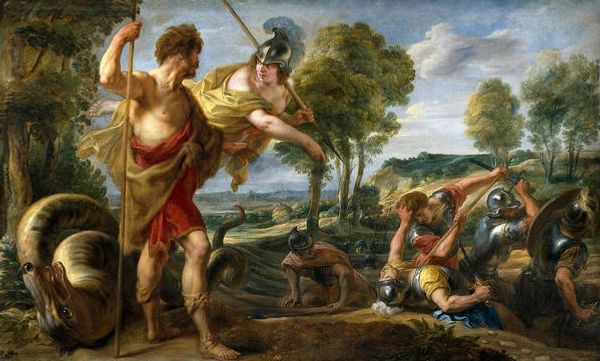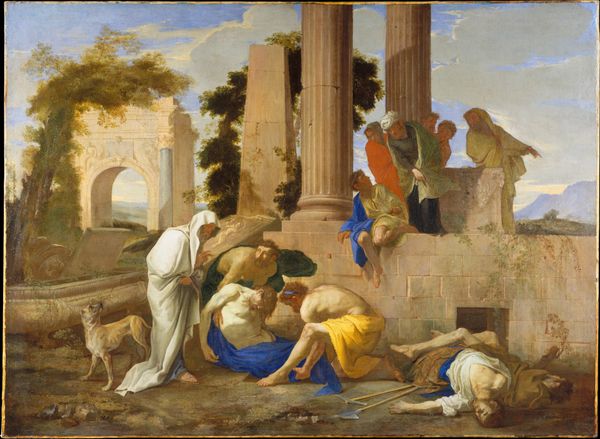
painting, oil-paint, canvas
#
neoclacissism
#
narrative-art
#
painting
#
oil-paint
#
landscape
#
figuration
#
oil painting
#
canvas
#
history-painting
Dimensions: 230 cm (height) x 303.5 cm (width) (Netto), 234.2 cm (height) x 308 cm (width) x 6.8 cm (depth) (Brutto)
Curator: Let's examine J.L. Lund’s canvas, “Pyrrhus and Andromache at Hector’s Tomb,” created between 1807 and 1811. This oil painting masterfully portrays a poignant scene from classical mythology, a cornerstone of Neoclassical art. Editor: It feels…staged, almost theatrical. But in a powerful way. The cool, muted colors, that looming architecture in the background... there's a sense of inevitability hanging in the air. Curator: Precisely. The composition meticulously directs the viewer's gaze. Observe the materials: the oil paint itself, laid so smoothly onto the canvas. Think about the pigments available to Lund at the time, and the laborious process of grinding and mixing them to achieve these exact shades. Editor: And then you have these classical figures, arranged like living sculptures, practically glowing. I'm struck by Andromache's pose – so full of grief and defiance all at once. You can almost feel her desperation clinging to her child. Curator: Indeed, Lund is deliberately referencing sculptural forms. Neoclassical artists were, in part, motivated by new archaeological discoveries; such forms had powerful cultural associations. Editor: There is something undeniably cold about all this "perfection," though, don't you think? This precise and posed composition, despite portraying pain and loss…it almost neutralizes it. Curator: Perhaps. However, look closer at the craftsmanship. Notice the fine detail in the draping fabrics, achieved through layering paint. Or how Lund used line to indicate forms under the fabric: an exercise to achieve precision and a controlled hand in art making. It's tempting to consider how Lund sourced materials as a creative act in the making of the artwork. Editor: Absolutely, there's a tension between the artifice and raw emotion. But that's what keeps it compelling. It makes me think about our own carefully constructed public personas, the stories we choose to tell—and the truths we leave buried. Curator: A valuable perspective. And hopefully our brief examination provides a new way of observing how this painting engages in complex dialogues regarding human emotion, the consumption of culture and visual art production itself. Editor: It has. The perfect art doesn’t move you… it haunts you.
Comments
No comments
Be the first to comment and join the conversation on the ultimate creative platform.
